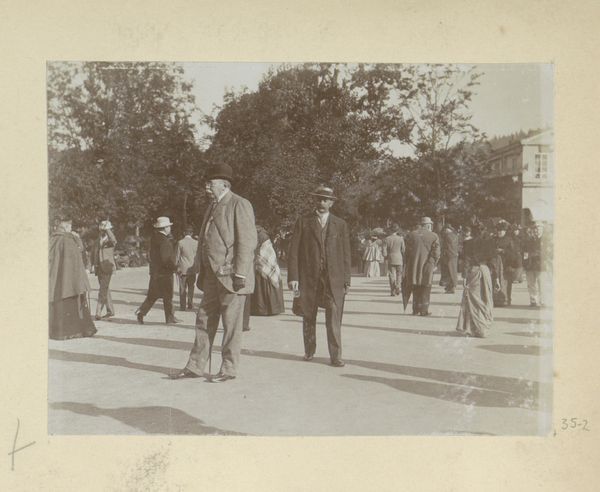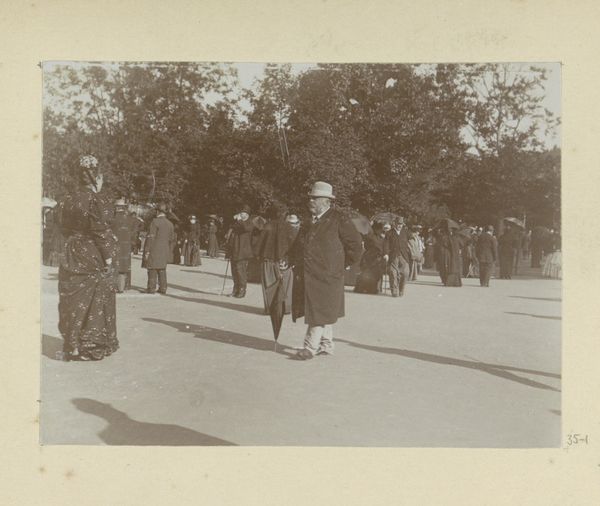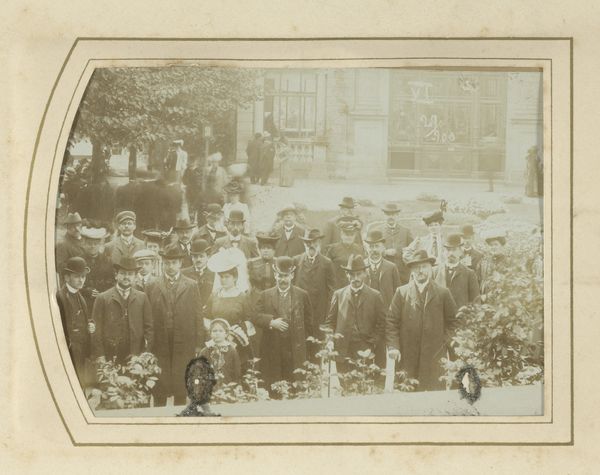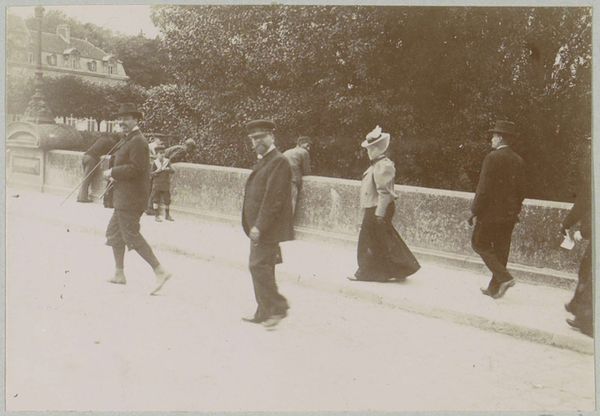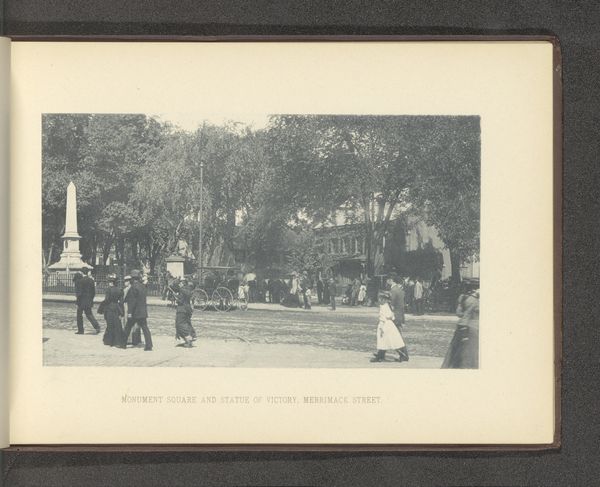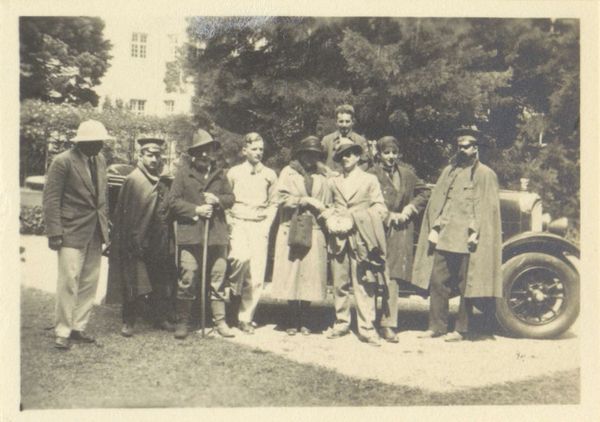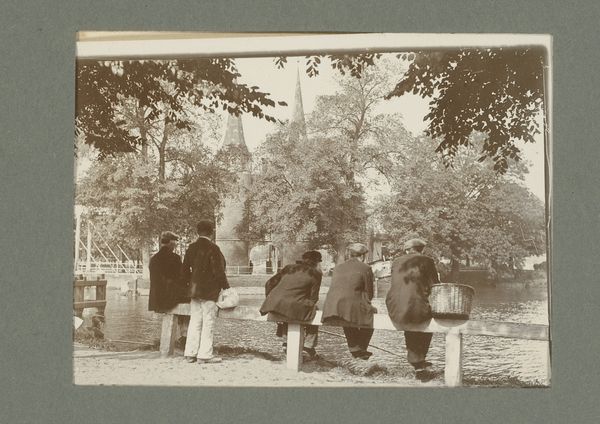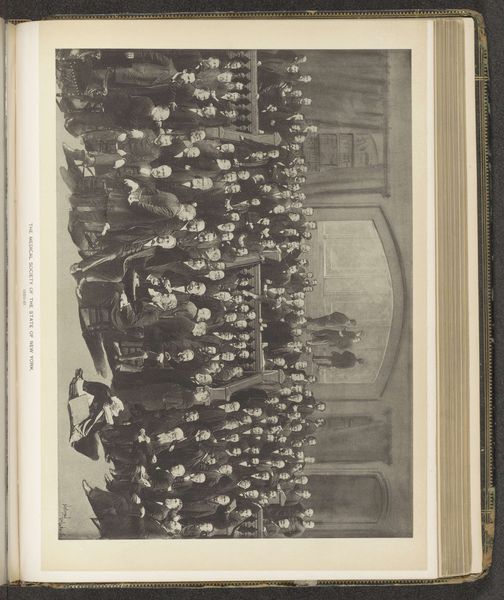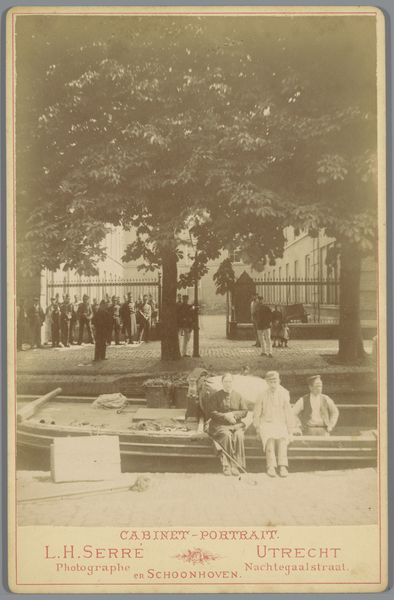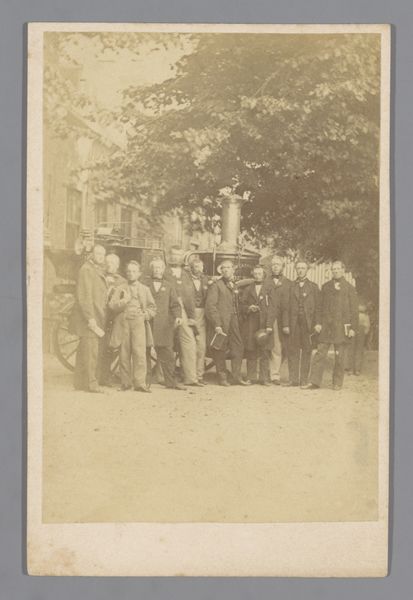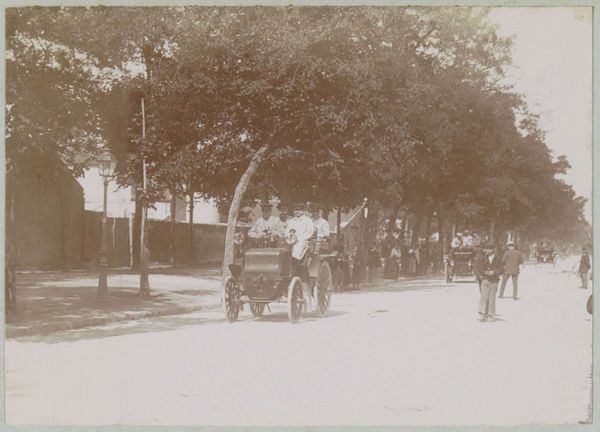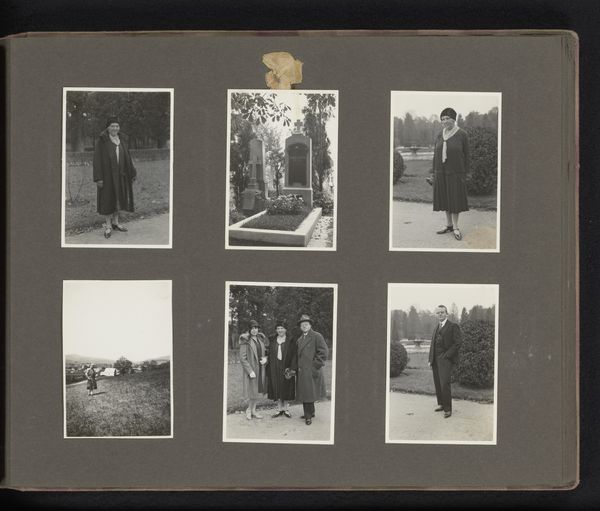
Dimensions: height 80 mm, width 109 mm
Copyright: Rijks Museum: Open Domain
Editor: This gelatin silver print, "Wandelende mensen op straat" – Walking People on the Street – was taken by Hendrik Herman van den Berg before 1894. There’s almost a ghostly feel to it, these figures captured mid-stride with soft, muted tones. What symbols do you see at play here, or how does it resonate with its time? Curator: It's interesting you use the word 'ghostly'. Gelatin silver prints, particularly early ones like this, often evoke that feeling. Consider the long exposures required; each figure isn’t merely standing, they are held there. And those darker clothes, obscuring any distinctive lines of the body. Editor: Yes, I also feel the anonymity that comes with that obscuring, as if this is less about particular individuals and more about representing a broader group, the city-dwellers. What are your thoughts? Curator: Precisely. This visual language speaks to broader ideas, especially considering this was created before the mass democratisation of cameras: who is included, and who is left outside? Look at their postures; what does their procession communicate to you? Editor: They appear quite somber, walking with purpose but not exactly joyful purpose. Perhaps hinting at the social conditions of the time? Curator: It’s important to also note how light and shadow delineate both presence and absence, particularly as technologies evolved, like photography, promising truth while shaping the lens and what we look at. How do we decide what is visible? It raises powerful questions about what history remembers and chooses to reveal. Editor: That's given me a whole new perspective. Seeing it as a social commentary expressed through shadow and posture changes my interpretation entirely. Curator: Indeed. Visual symbols, like light, have cultural and psychological resonance. We can engage more deeply with both the photographic and sociological intention.
Comments
No comments
Be the first to comment and join the conversation on the ultimate creative platform.
